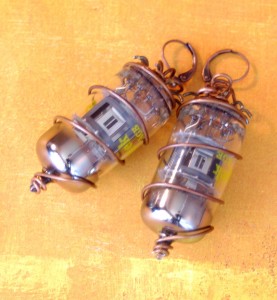And here we go again – tube matching, this time preamp tubes – the topic will never end, but I hope to bring some clarity to it
There are technically 3 ways to measure tubes:
1) Emission testing – this test current that a tube can supply. Not bad, but rarely tests tube at real working conditions (really bad) and doesn’t test for any issues with grids inside a tube. It can show you that tube is good or bad, but forget about matching on this kind of testing. If you see somebody selling tubes and quoting emission test results – ignore them. The only thing they say is that tube is still working, but might not be working well. I had and still have emission tester (just for fun). You can get a great measuring tube what’s is unusable.
2) Mutual Conductance = transconductance (Gm) – this is a better method of measuring tubes. It’s “a ratio of the current change at the output port to the voltage change at the input.” This measurement can definitely tell you whether at tube is strong or not. However it now suffers not only from measuring Gm at conditions removed from actual (so when you use it, it can be quite weak). And then the problem of incorrect voltage on grids – which can skew results in one or the other direction. However, if you want to know if the tube is strong, this is much better test than emissions. But matched on mutual conductance tubes are not matched!!! I have a lot of tubes that measure perfectly on Gm, but are not matched by gain at all.
3) Gain matching (Mu) – gain is an amount of voltage amplification that a tube can produce. It’s derived from change in voltage at the output port to the voltage change at the input port. To translate, Mu defines how loud a tube plays, which is the only thing that is important in a preamplifier – including phase splitters circuit. The easiest way to get to the number is to use GM / Rp (plate resistance), which logically takes us to conclusion that Mu is proportional to Gm for the same tube. THIS IS INCORRECT. I tested many tubes (the same maker, the same year, the same type) and the darn resistance is different for many tubes from the same lot (even inside of the same tube). Unfortunately, there are very few tube testers that can measure Gm since it requires calculations and practically no tube testers can calculate. The difference unfortunately could be huge – I saw as much 50% Mu difference in tubes that measure NEW and perfectly “matched” on mutual conductance. So if you need a matched preamp tube, request from a seller that they be matched on gain and nothing else. Also request NEW results for this type of a tube (this is tester independent), you will know how strong the tube is as well. Mu reduces as tube gets used.
Please note that this is primarily relevant only to preamplifier tubes (small signal tubes). Matching on gain is not as relevant to power tubes because their gain is usually very small – they amplify current not voltage.
Hope that will help you find that perfect matched pair/quad, etc.


Also, check out our new article on Tube Matching 101